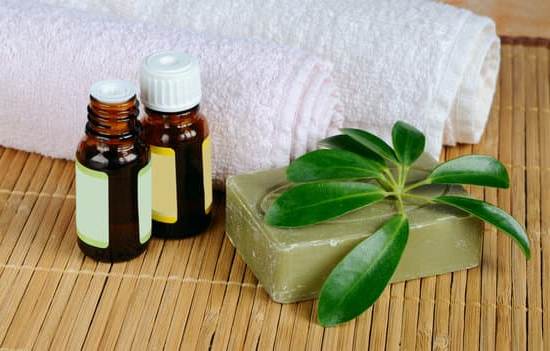Are you looking for natural relief from eye strain? This article delves into how to treat eye strain with aromatherapy, offering soothing and effective solutions. From understanding the causes and symptoms of eye strain to utilizing essential oils for relief, we explore the benefits and best practices for using aromatherapy as a holistic approach to maintaining overall eye wellness.
Eye strain is a common condition resulting from prolonged use of digital devices, reading, or other visually demanding tasks. Symptoms may include dryness, irritation, blurred vision, and headaches. Understanding the root causes and identifying the signs of eye strain is crucial in effectively addressing this discomfort.
Aromatherapy has been shown to have calming effects on tired eyes and can provide relief from eye strain naturally. By harnessing the natural healing properties of essential oils, individuals can experience comfort and relaxation while alleviating symptoms associated with eye strain. In the following sections, we will delve into the specific benefits of aromatherapy for eye strain relief and provide detailed information on the top essential oils recommended for treating this condition.
The Benefits of Aromatherapy for Eye Strain Relief
Aromatherapy has long been recognized for its ability to provide relief from various ailments, including eye strain. The use of essential oils in aromatherapy can offer a natural and holistic approach to soothing tired and achy eyes.
The fragrant oils derived from plants have soothing and calming effects that can help alleviate the discomfort associated with prolonged screen time, driving, or reading. By understanding the benefits of aromatherapy for eye strain relief, individuals can unlock the potential of these natural remedies.
The soothing effects of aromatherapy can help reduce the symptoms of eye strain such as dryness, irritation, and fatigue. Essential oils possess natural healing properties that have been known to relax the muscles around the eyes and promote better blood flow, ultimately reducing tension and discomfort. Additionally, aromatherapy can also aid in relieving stress and anxiety which may contribute to eye strain.
Some of the best essential oils for treating eye strain include:
- Lavender: Known for its calming and relaxing properties
- Peppermint: Has a cooling effect that can alleviate discomfort
- Chamomile: Soothes inflammation and irritation
- Eucalyptus: Offers a refreshing sensation that can relieve dryness
When using aromatherapy for eye strain relief, it is important to do so safely in order to avoid any adverse reactions or further irritation. When applying essential oils near the eyes, it is crucial to dilute them properly in a carrier oil such as coconut or almond oil before use. Always perform a patch test on your skin before applying any new essential oil near your eyes to ensure you do not have an allergic reaction.
Overall, understanding how to treat eye strain with aromatherapy can provide individuals with a natural and gentle way to find relief from discomfort and promote overall eye wellness. By utilizing carefully selected essential oils and practicing proper application techniques, individuals can incorporate aromatherapy into their daily routines as a holistic approach to managing eye strain.
Essential Oils for Eye Strain
When it comes to alleviating eye strain, essential oils can be incredibly effective in providing natural relief. The soothing properties of certain essential oils can help relax tired eyes and reduce discomfort. With the right essential oil, one can experience significant improvement in eye strain symptoms.
Top Picks for Essential Oils
There are several essential oils that are particularly beneficial for treating eye strain. One of the top picks is lavender oil, known for its calming and relaxing effects. Another excellent option is rose oil, which has anti-inflammatory properties that can help reduce puffiness and irritation around the eyes. Additionally, chamomile oil is highly recommended for its soothing and anti-inflammatory benefits.
Each oil has specific benefits that make them effective in addressing different aspects of eye strain, whether it’s dryness, puffiness, or overall fatigue. For example, lavender oil can help ease tension headaches often associated with eye strain, while rose oil can reduce redness and inflammation. Chamomile oil works wonders in reducing swelling and irritation caused by prolonged screen time or environmental factors.
| Essential Oil | Benefits |
|---|---|
| Lavender Oil | Calming and relaxing; eases tension headaches |
| Rose Oil | Anti-inflammatory; reduces redness and puffiness |
| Chamomile Oil | Soothing and reduces swelling; eases irritation caused by prolonged screen time |
Using any of these essential oils through aromatherapy techniques has shown significant promise in relieving eye strain naturally without needing pharmaceutical interventions. It’s important to mention that using high-quality essential oils is crucial to ensure effectiveness and safety when applying near the delicate area around the eyes.
Overall, discovering the power of these essential oils through aromatherapy offers a holistic approach that not only addresses current symptoms but also promotes long-term eye health through their natural healing properties.
By incorporating these essential oils into a regular self-care routine alongside effective lifestyle changes to minimize eye strain triggers, individuals can significantly improve their overall well-being related to visual health.
How to Use Aromatherapy for Eye Strain Relief
Step-by-Step Instructions for Using Essential Oils
To treat eye strain with aromatherapy, start by choosing a high-quality essential oil known for its soothing properties such as lavender, chamomile, or peppermint. Once you’ve selected your oil, dilute it in a carrier oil such as almond or jojoba oil to ensure it is safe for use around the delicate eye area. For a gentle and effective application, add 1-2 drops of the diluted essential oil onto a clean cotton pad or ball.
Next, close your eyes and gently press the pad against your eyelids, allowing the aroma to envelop your senses. Take slow, deep breaths and allow the calming scent to relax your eye muscles and alleviate any tension. You can repeat this process as needed throughout the day to keep your eyes feeling refreshed and rejuvenated.
Different Application Methods for Eye Strain Relief
Apart from using essential oils directly on the eyelids, there are other effective methods for incorporating aromatherapy into your eye strain relief routine. Aromatherapy diffusers are an excellent way to disperse essential oils into the air, creating a calming environment that can help reduce eye strain. You can also add a few drops of essential oil to a warm or cool compress and gently place it over closed eyes for added relaxation.
In addition to these methods, gentle massages using diluted essential oils around the temples and forehead area can also provide relief from eye strain. The combination of soothing scents and gentle massage can work wonders in alleviating tension and promoting overall relaxation.
Custom Aromatherapy Blends for Eye Strain Relief
For those wanting to create their own custom blend specifically designed for treating eye strain, consider mixing different essential oils known for their relaxing and calming properties. For example, combining lavender with chamomile can create a harmonious blend that promotes deep relaxation and helps alleviate eye fatigue. Experimenting with various combinations will allow you to find the perfect blend that works best for you in providing lasting relief from eye strain.
Aromatherapy Blends for Eye Relief
Aromatherapy can be a wonderful natural remedy for alleviating eye strain, and creating custom essential oil blends specifically designed for this purpose can enhance its effectiveness. By combining the right essential oils, you can create soothing blends that provide relief to tired eyes and promote overall eye health.
When it comes to treating eye strain with aromatherapy, some of the best essential oils to consider include lavender, chamomile, and rose. Lavender oil is known for its calming properties and can help reduce tension in the eye muscles, while chamomile has anti-inflammatory effects that can soothe tired and puffy eyes. Rose oil is excellent for moisturizing the delicate skin around the eyes and promoting circulation.
To create your own custom aromatherapy blend for eye relief, consider combining a few drops of lavender, chamomile, and rose essential oils with a carrier oil such as coconut or almond oil. This will help dilute the potent essential oils and make them safe for use around the delicate eye area.
| Essential Oil | Benefits |
|---|---|
| Lavender | Calming properties that reduce tension in eye muscles |
| Chamomile | Anti-inflammatory effects that soothe tired and puffy eyes |
| Rose | Moisturizes delicate skin around the eyes and promotes circulation |
Creating your own aromatherapy blend allows you to customize the scent according to your preferences while reaping the benefits of multiple essential oils at once. Once you have your blend ready, you can use it in various ways such as applying it topically around the eyes (after performing a patch test on the skin), using it in a diffuser, or incorporating it into an eye compress.
These DIY recipes provide an easy way to incorporate aromatherapy into your everyday eye care routine for lasting relief from eye strain.
In addition to using aromatherapy blends, making lifestyle changes such as managing screen time, adjusting lighting, practicing good posture, and integrating relaxation techniques can also contribute to minimizing eye strain over time.
Best Practices for Using Aromatherapy Safely Around the Eyes
Aromatherapy can be a great natural remedy for treating eye strain, but it’s important to use essential oils safely, especially when applying them near the eyes. Here are some best practices for using aromatherapy safely around the eyes:
1. Dilute Essential Oils: When using essential oils near the eyes, it’s crucial to dilute them properly to reduce the risk of irritation. Mix a few drops of essential oil with a carrier oil such as coconut oil, jojoba oil, or sweet almond oil before applying it around the eyes.
2. Avoid Direct Contact: It’s important to avoid direct contact of undiluted essential oils with the eyes. Always apply diluted essential oils on the skin around the eyes and never directly into the eyes themselves.
3. Gentle Application Techniques: When using aromatherapy for eye strain relief, opt for gentle application techniques such as use of compresses or light massages. Be mindful not to rub or apply excessive pressure around the delicate eye area.
Remember that safety is key when using aromatherapy for treating eye strain. By following these best practices, you can effectively harness the soothing benefits of essential oils without compromising eye health.
Lifestyle Changes to Prevent and Reduce Eye Strain
In today’s digital age, many of us spend hours in front of screens, whether it’s for work, school, or leisure. This prolonged screen time can lead to eye strain, also known as computer vision syndrome. Understanding the causes and symptoms of eye strain is essential in finding effective ways to prevent and reduce its impact on our eyes.
Understanding the Causes and Symptoms of Eye Strain
Eye strain can be caused by a variety of factors such as staring at screens for extended periods, poor lighting, improper ergonomics, and uncorrected vision problems. Common symptoms of eye strain include dry eyes, blurred vision, headaches, and increased sensitivity to light. Recognizing these signs is crucial in addressing and alleviating eye strain before it becomes more severe.
Tips for Managing Screen Time and Adjusting Lighting
One way to prevent eye strain is by managing screen time. Taking regular breaks from the screen every 20 minutes to look at something 20 feet away for at least 20 seconds can help relax the eyes. Additionally, adjusting the lighting in your workspace can make a significant difference. Avoiding harsh overhead lighting and reducing glare from windows or reflections on screens can help minimize eye discomfort.
Ergonomics and Posture for Overall Eye Health
Another important aspect of preventing eye strain is maintaining proper ergonomics and posture. Positioning your computer monitor at eye level to reduce strain on the neck muscles can help alleviate tension in the eyes as well. Furthermore, ensuring that you are sitting with good posture while working or using electronic devices can prevent unnecessary stress on the eyes and surrounding muscles.
Incorporating these lifestyle changes into your daily routine can significantly reduce the risk of developing eye strain. By being conscious of screen time management, adjusting lighting conditions, and maintaining good ergonomics, you can take proactive steps toward promoting overall eye health – complemented by holistic remedies like aromatherapy for lasting relief from eye strain.
Additional Tips and Tricks for Alleviating Eye Strain Naturally
Do you experience eye strain from spending long hours in front of a screen or due to other factors such as bright light or environmental irritants? If so, you may be seeking natural methods to alleviate this discomfort. In addition to aromatherapy, there are several alternative techniques that can help relieve eye strain and promote overall eye wellness.
One of the most effective ways to alleviate eye strain naturally is by incorporating regular eye exercises into your daily routine. These exercises can help strengthen the muscles around the eyes, improve focus, and reduce fatigue. Some simple yet effective exercises include palming, focusing on distant objects, and gentle eye massages. By adding these exercises to your routine, you can help prevent and reduce eye strain without relying solely on external remedies.
Relaxation techniques such as deep breathing, mindfulness meditation, and progressive muscle relaxation can also play a significant role in alleviating eye strain. These practices not only promote overall relaxation but can also reduce tension in the eyes and surrounding muscles. By incorporating these techniques into your daily schedule, you can effectively manage stress-related eye strain and promote better visual comfort.
When dealing with persistent eye strain, warm or cold compresses can offer quick relief. Applying a warm compress over closed eyes can help relax the muscles and increase blood circulation around the eyes. On the other hand, a cold compress can help soothe irritation and reduce puffiness. Including these simple remedies in your self-care routine alongside aromatherapy can provide comprehensive relief from eye strain discomfort.
Incorporating these additional tips and tricks into your daily routine along with aromatherapy for treating eye strain will help to ensure holistic relief from any discomfort that arises. Taking care of your eyes’ health through both external remedies like essential oils as well as internal practices like exercise and relaxation will be beneficial for lasting relief from eye strain.
Conclusion
In conclusion, aromatherapy has been shown to be a highly effective and natural method for treating eye strain. By using essential oils with soothing and healing properties, individuals can alleviate the discomfort associated with tired eyes and promote overall eye wellness. Whether it’s through creating custom blends, following safe application techniques, or making lifestyle adjustments, aromatherapy offers a holistic approach to eye care that can provide lasting relief.
The specific benefits of essential oils such as lavender, peppermint, and chamomile have been highlighted in this article, showcasing their potential to reduce eye strain symptoms. Additionally, the step-by-step instructions for using aromatherapy for eye strain relief offer practical guidance for readers looking to incorporate this natural remedy into their daily routine. From DIY tips to lifestyle changes and additional practices like eye exercises and relaxation techniques, there are a variety of ways to address eye strain naturally.
Ultimately, by understanding the causes and symptoms of eye strain and taking proactive steps to alleviate discomfort through aromatherapy, individuals can achieve sustainable relief. It is important to remember that while aromatherapy can be a valuable tool in managing eye strain, it should not replace professional medical advice if there are underlying issues causing prolonged discomfort.
With the proper use of essential oils and holistic approaches to maintaining overall eye wellness, individuals can find comfort and relief from the symptoms of eye strain.

Are you looking for a natural way to improve your health and wellbeing?
If so, aromatherapy may be the answer for you.






